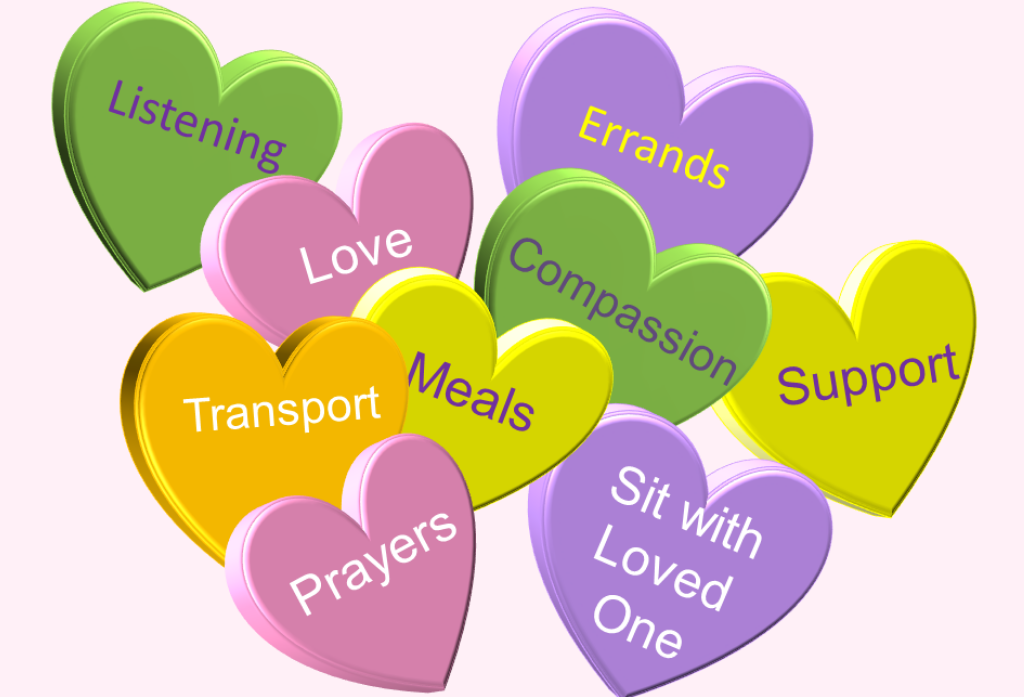Yes, it’s that time again. It’s time for cards and candy. It’s time for flowers and romance. Or is it? You are a caregiver. Your days are busy. Your loved one needs your attention. You may not even have time to get made up and fix your hair. You are hoping you mailed off all the valentines you wanted to couple of days ago.
Suddenly you are taken back to your childhood. You remember Valentine’s Day parties at school. You envision your decorated shoe box full of valentines from all your classmates. You remember the excitement of opening the box of valentines and looking for one from a certain friend. You remember looking for envelopes that looked like they had some kind of a treat in them.
Maybe you would get lucky and get your favorite candy. They were all heart-shaped. They came in various pastel colors. Often, they came in a small box. This candy had a peculiar name. They were called Conversation Hearts. Now, why on earth would anyone name a candy anything to do with conversation? First of all, the candies all had one or two words on them. Those words communicated a message. The message might be to someone the giver loved, or to a close friend. One candy might be very serious and just say, “True Love”. Another candy might be light-hearted and say “You’re Cute” or “Cool Kid”. Whatever they said, it might all be considered in fun, but there was a form of conversation going on between the giver and the receiver.
As a caregiver, you might also consider giving Conversation Hearts to friends, family, and co-workers to spark a conversation. People want to help. They don’t know how. Start a conversation. Tell them what you need help with. Carefully select words to put on your Conversation Hearts that reflect how you feel. Select words that identify what your friends, family, and co-workers could do to help you. Use this tool to communicate what you need help with as you give care to a loved one.
Do you need someone to help drive your loved one to and from some appointments so you don’t have to take off so much time from work? Could you use some help making meals? Maybe if someone were to run errands or do some shopping for you, you could benefit from that break. Are there some handyman tasks around the house that need attention? Are you sleep-deprived and could just use a few hours of uninterrupted sleep if someone would sit with your loved one? Would an afternoon away with friends or your children give your spirits a much-needed lift? Is your loved one’s prognosis worsening and you would like to know that others are praying for him or her? Are the phone calls and visits from friends decreasing, while you feel more alone and cut off from the outside world? Sometimes, people slack off on calling and visiting because they feel you are very busy with your loved one and they don’t want to “bother” you. In reality, you may need and want those visits and calls to help you get through this difficult time in your life.
It can be difficult for some people to ask for help. Just remember, many of your friends and relatives want to help, but may not really know how to help or what you need help with. If you make that information known to them, you are much more likely to receive the help you need. So, don’t hesitate, go ahead. Start a conversation about your situation with family, friends, and co-workers. Be pro-active in getting the help you need to best take care of yourself.
From me to you, here’s a Valentine’s wish full of love and peace!
Would you like more tips to help you as a caregiver?
Blog: Blog – susanbrownell.com
Caregiver Book: http://amzn.to/2cMd246

